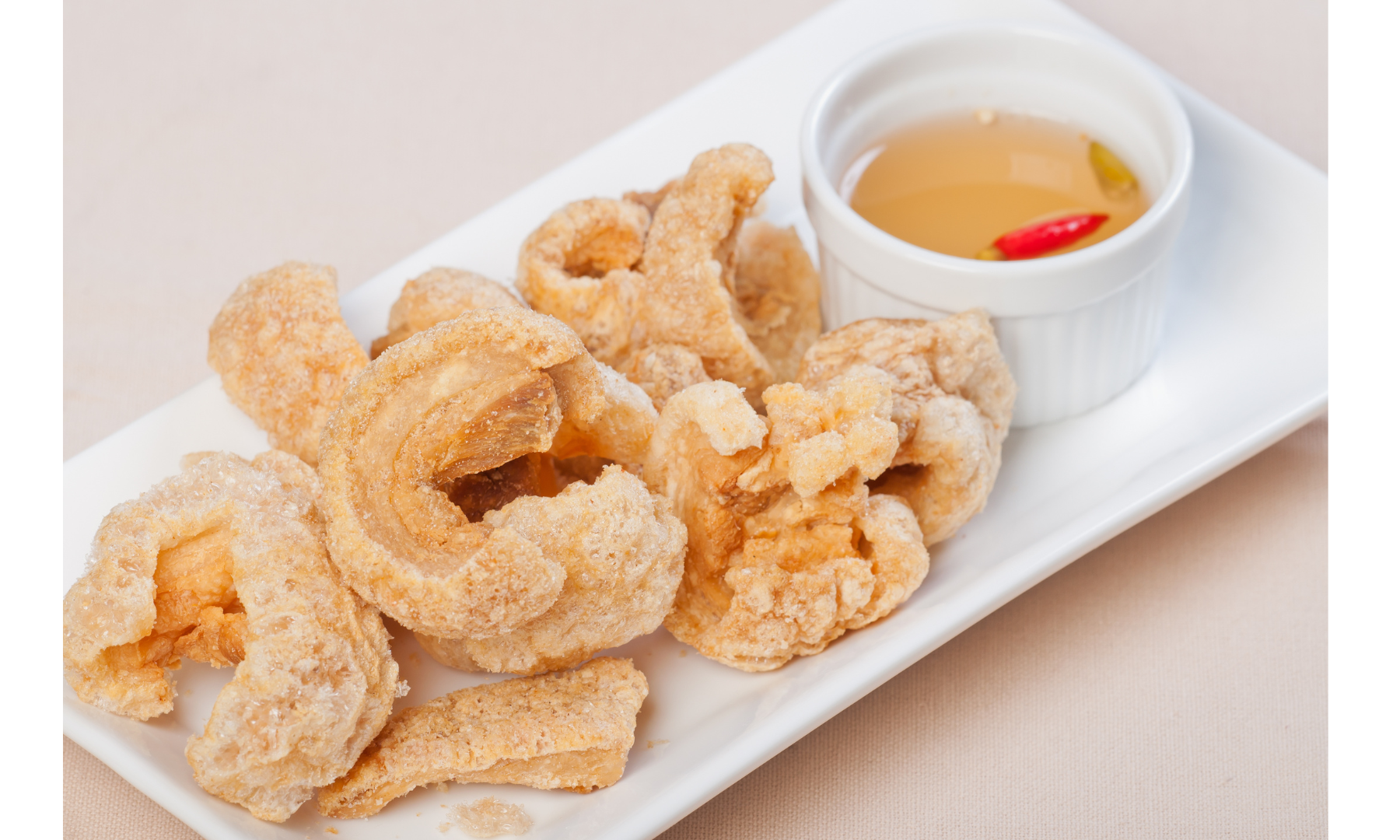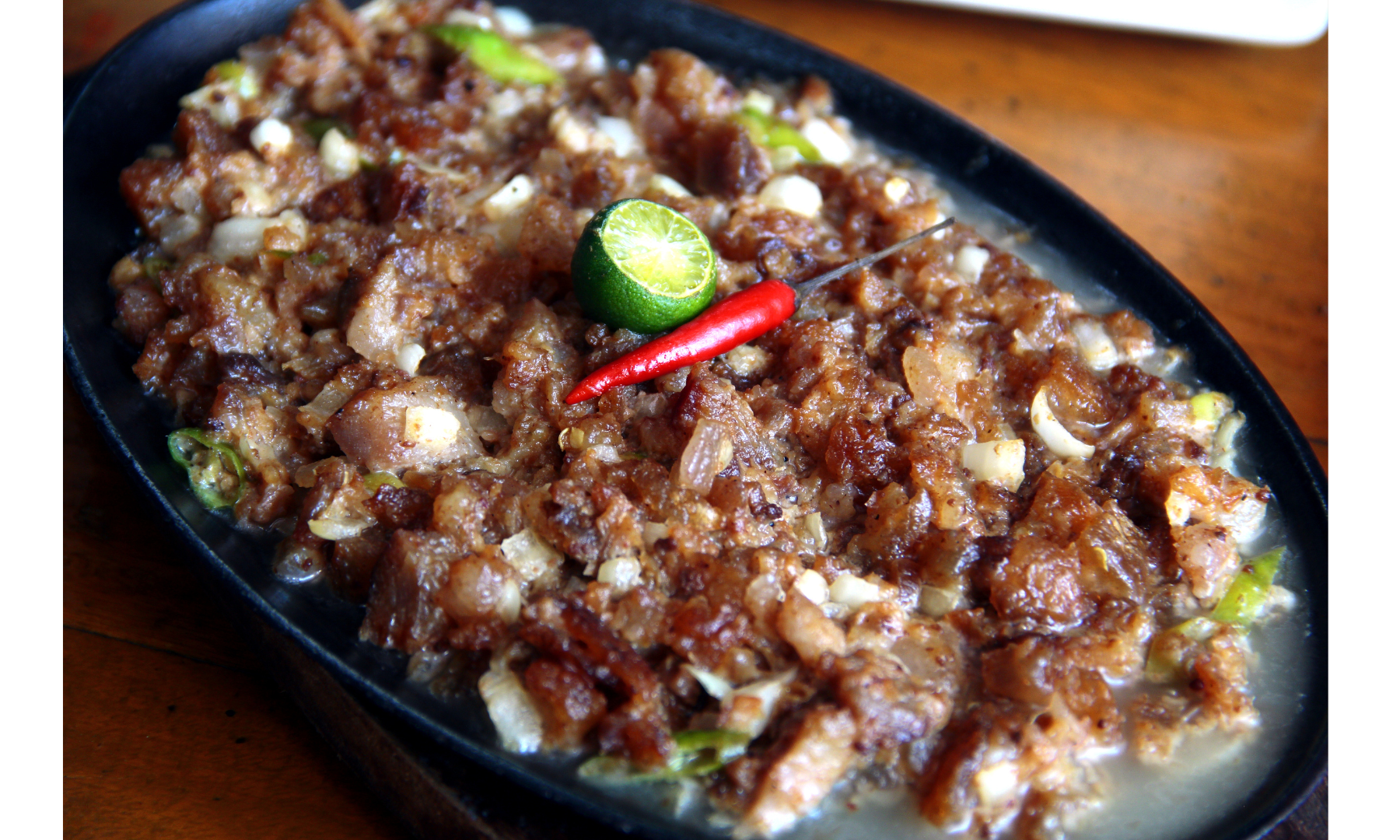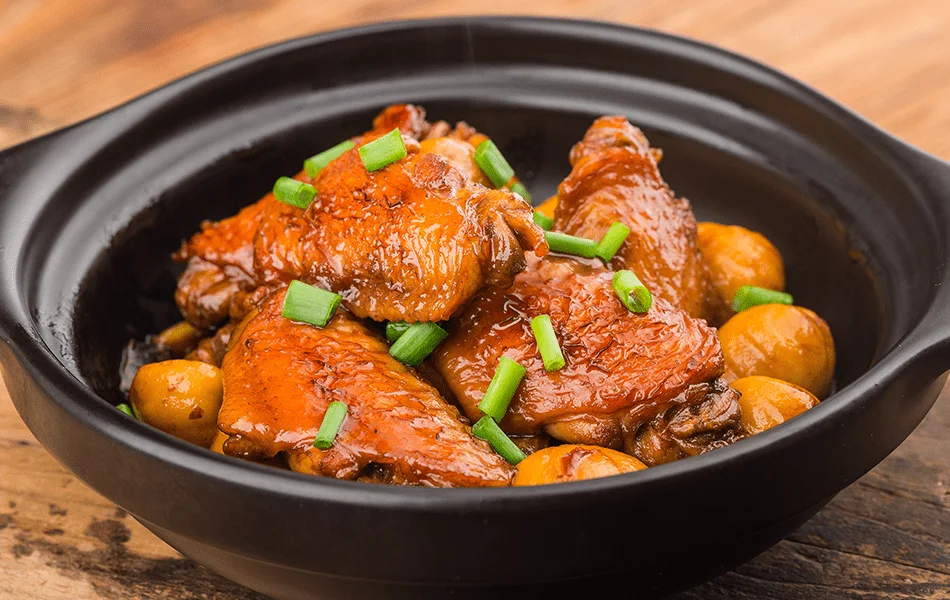Indulge in the vibrant flavors and culinary delights of the Philippines with our exploration of famous Filipino dishes. Bursting with unique combinations of spices, textures, and aromas, Filipino cuisine has captured the hearts and palates of food enthusiasts around the globe. From the delectable pork adobo or chicken adobo, a savory blend of tender meat and tangy vinegar, to the mouthwatering pancit, a medley of stir-fried noodles and fresh vegetables, easy Filipino recipes reflect the rich cultural heritage and diverse influences that shape Filipino gastronomy. Join us on this culinary journey as we delve into the world of famous Filipino dishes to eat in the Philippines, unlocking the secrets of their preparation, and savoring the unforgettable flavors that define this beloved cuisine. Get ready to embark on a delicious adventure and discover the simple yet extraordinary dishes that can be enjoyed in the comfort of your own home. But first, know the essential condo appliances you should have and start cooking these amazing dishes.
Famous Filipino Dishes: Must-Eat in the Philippines! – Wandering Wheatley.
1. Adobo: A Symphony of Savory Goodness
Are you ready to experience a symphony of flavors that will make your taste buds dance with delight? Look no further than Adobo, the crown jewel of Filipino cuisine. Bursting with savory goodness, this iconic national dish is a must-eat in the Philippines with a harmonious blend of ingredients that will transport you to the vibrant streets of the Philippines.
Adobo is more than just Filipino food; it’s a cultural treasure that has been passed down through generations. Each family has their own variation, their own secret twist, making every bite a unique experience. Some add bay leaves for an earthy note, while others sprinkle in black peppercorns to add a hint of heat. Whatever the variation, the result is always a symphony of flavors that will leave you craving more.
To cook this tantalizing Filipino food at home, follow these simple steps:
Ingredients
- 2 pounds of chicken or pork (cut into bite-sized pieces)
- 1/2 cup soy sauce, 1/2 cup vinegar (preferably cane or white vinegar)
- 4 cloves of garlic (minced)
- 1 teaspoon black peppercorns
- 2 bay leaves
- 1 tablespoon cooking oil.
- brown sugar (Optional)
How to cook Adobo?
1. Marinate the meat: In a bowl or zip-top bag, combine the meat, soy sauce, vinegar, minced garlic, black peppercorns, and bay leaves. Toss to ensure the meat is evenly coated. Let it marinate for at least 30 minutes or refrigerate overnight for deeper flavors.
2. Sauté the meat: Heat the cooking oil in a large pan or pot over medium heat. Remove the meat from the marinade, reserving the marinade for later. Sauté the meat until browned on all sides, about 5-7 minutes.
3. Simmer and braise: Pour the reserved marinade into the pan with the meat. Bring it to a boil, then reduce the heat to low. Cover and simmer for about 30-40 minutes, or until the meat is tender and the flavors have melded together. Stir occasionally to prevent sticking.
4. Optional step for a caramelized finish: If desired, you can uncover the pan and increase the heat to medium-high in the last 5 minutes of cooking. This will allow the sauce to reduce and caramelize slightly, adding a rich depth of flavor. You may add brown sugar if you want something your adobo with a hint of sweetness.
5. Serve and enjoy: Adobo is traditionally enjoyed with steamed rice, which helps to balance the savory flavors. Garnish with chopped green onions or cilantro for a pop of freshness. Serve hot and savor the symphony of savory goodness you have created. You may also try pairing it with garlic fried rice.
Now, gather your loved ones around the table and let them experience the magic of homemade Adobo. With each bite, you’ll be transported to the vibrant streets of the Philippines, embracing the rich culinary heritage of this beloved national dish. Unexpectedly, you can cook Adobo in the rice cooker, find out how in this article.

2. Garlic Fried Rice
Filipino Garlic Rice, also known as “Sinangag,” is a simple yet incredibly flavorful Filipino food to eat in the Philippines that perfectly complements many Filipino dishes. Made with day-old rice and infused with aromatic garlic, this dish adds an irresistible savory twist to your meal even with just a simple fried egg. Here’s how you can prepare this mouthwatering Filipino staple:
Ingredients:
- 4 cups cooked rice (preferably day-old rice)
- 4 cloves of garlic, minced
- 2 tablespoons cooking oil
- 1 tablespoon soy sauce (optional)
- Salt and pepper to taste
- Chopped green onions for garnish (optional)
How to cook Garlic Fried Rice?
1. Heat the cooking oil in a large pan or skillet over medium heat.
2. Add the minced garlic to the hot oil and sauté until fragrant and golden brown, being careful not to burn it.
3. If desired, you can add a tablespoon of soy sauce to the pan for an extra depth of flavor. Mix well with the garlic.
4. Add the cooked rice to the pan, breaking up any clumps with a spatula or wooden spoon. Ensure that the rice is evenly coated with the garlic and soy sauce mixture.
5. Continue stirring and cooking the rice for about 5-7 minutes until it is heated through and slightly toasted. This will give the rice a pleasant nutty flavor.
6. Season with salt and pepper to taste. Remember to start with a small amount of salt, as the soy sauce may already add some saltiness.
7. Remove the pan from the heat and transfer the Filipino Garlic Rice to a serving dish.
8. Garnish with chopped green onions for added freshness and a pop of color.
If you’re ever wondering where to pair this dish. This dish is best paired with almost any famous Filipino dish which includes chicken adobo or pork adobo, Pan-fried Filipino spring rolls, Corned beef, Fried Egg, Filipino Sausage, Filipino pork bbq, etc., mainly most Filipino savory dishes or even Vegetable dishes.
Filipino Garlic Rice is a versatile and delicious accompaniment that will elevate any meal. Its aromatic garlic aroma and savory flavors will leave your taste buds yearning for more. So, give this simple yet satisfying recipe a try and experience the taste of the Philippines right in your own home at Asterra Condominium. Find more rice recipes here.

3. Chicharon (Deep-Fried Pork Belly)
Get ready to indulge in a crispy, flavorful treat that will have you reaching for seconds—Chicharon, the ultimate Filipino deep-fried pork belly. This famous Filipino side dish and snack is a culinary delight that perfectly combines indulgence and simplicity. With its irresistible crunch and savory goodness, Chicharon is a must-try for all pork lovers. Here’s how you can prepare this delectable side dish:
Ingredients:
- 1 pound pork belly, skin-on and thinly sliced
- Salt and pepper to taste
- Oil for frying
- Vinegar or spicy vinegar dip (optional)
How to cook Chicharon?
1. Begin by thoroughly drying the pork belly slices with paper towels. This step is crucial for achieving a crispy texture.
2. Using a sharp knife, score the pork skin in a crosshatch pattern. This will help the skin puff up and become extra crispy during frying.
3. Season both sides of the pork belly slices generously with salt and pepper. Ensure that the seasoning reaches the scores on the skin.
4. In a deep, heavy-bottomed pot or deep fryer, heat enough oil to fully submerge the pork belly slices. The oil should be heated to around 350°F (175°C).
5. Carefully add the seasoned pork belly slices to the hot oil, one by one, skin side down. Be cautious as the oil may splatter. Fry in batches if necessary, ensuring not to overcrowd the pot.
6. Fry the pork belly slices for about 10-15 minutes, or until the skin is golden brown, crispy, and puffed up. Flip the slices occasionally to ensure even frying.
7. Using tongs or a slotted spoon, remove the crispy Chicharon from the oil and transfer them to a plate lined with paper towels. This will help absorb any excess oil.
8. Allow the Chicharon to cool slightly before serving. They are best enjoyed while still warm and crispy.
9. For added flavor, you can serve Chicharon with vinegar or spicy vinegar dip with lots of chili peppers on the side. The tanginess and hotness of chili peppers complement the rich flavors of the pork belly perfectly.
Now, sit back and relish the irresistible delight of Chicharon. Bite into the crispy exterior, revel in the rich flavors of the pork belly, and savor the savory goodness that unfolds with each mouthwatering crunch. Whether enjoyed as a snack or as a show-stopping appetizer, Chicharon is sure to satisfy your cravings and leave you wanting more.

4. Lumpia (Filipino Spring Rolls)
Traditional Filipino side dish and appetizer that will impress your taste buds. These crispy, savory delights are packed with a medley of vegetables, meat, and aromatic seasonings, making them an absolute crowd-pleaser. Whether you’re hosting a gathering or simply craving a delightful snack, here’s how you can make Filipino Lumpia Spring Rolls at home:
Ingredients:
- 1 pack of spring roll wrappers (usually available in the frozen section of Asian grocery stores)
- 1/2 pound ground pork or chicken
- 1 cup shredded cabbage
- 1 cup grated carrots
- 1 small onion, finely chopped
- 2 cloves of garlic, minced
- 2 tablespoons soy sauce
- 1 tablespoon fish sauce
- 1 teaspoon black pepper
- Cooking oil for frying
- Sweet chili sauce or vinegar dipping sauce for serving
How to cook Lumpia?
1. In a large skillet or pan, heat a tablespoon of cooking oil over medium heat. Sauté the garlic and onion until fragrant and translucent.
2. Add the ground meat, pork or chicken to the pan and cook until browned and fully cooked through.
3. Stir in the shredded cabbage and grated carrots, and cook for a few minutes until slightly softened.
4. Season the mixture with soy sauce, fish sauce, and black pepper. Stir well to ensure the flavors are evenly distributed. Remove the mixture from the heat and let it cool.
5. Take a spring roll wrapper and place it on a clean surface, positioning it in a diamond shape with one corner pointing towards you.
6. Spoon about two tablespoons of the filling onto the center of the wrapper, forming a rectangular shape. Be careful not to overstuff.
7. Fold the corner closest to you over the filling, tucking it in snugly. Roll once, then fold in the sides towards the center. Continue rolling tightly until you reach the opposite corner, forming a neat, sealed roll. Use a bit of water to seal the edge if necessary.
8. Repeat the filling and rolling process with the remaining wrappers and filling.
9. In a deep skillet or pot, heat enough oil for deep frying over medium-high heat. Carefully place the Lumpia Spring Rolls into the hot oil, a few at a time, and fry until they turn golden brown and crispy. This usually takes about 3-4 minutes per batch.
10. Once fried, transfer the Lumpia Spring Rolls to a plate lined with paper towels to drain any excess oil.
11. Serve the Lumpia Spring Rolls while still hot and crispy, alongside sweet chili sauce or vinegar dipping sauce for an extra burst of flavor.
Get ready to enjoy the crunchy exterior and delectable filling of Filipino Lumpia Spring Rolls. The combination of vegetables, meat, and seasonings creates a harmony of textures and tastes that will leave you craving more. So gather your friends and family, share the joy of these delicious spring rolls, and experience a true Filipino culinary delight.

5. Sizzling Pork Sisig: with a dash of Soy Sauce and Mayonaise
Prepare your taste buds for a sizzling and bold dish that embodies the heart and soul of a traditional Filipino dish—Sisig. Originating from the Pampanga region of the Philippines, this iconic dish is a harmonious fusion of flavors and textures. With its sizzling presentation and tantalizing combination of savory, tangy, and spicy elements, Sisig is an absolute delight for those seeking an adventurous culinary experience. Let’s dive into the world of Sisig and discover how to make this sizzling sensation at home:
Ingredients:
- 1 pound pig’s ears, boiled until tender and chopped into small pieces
- 1 pound pig’s jowls (or grilled pork belly), boiled until tender and chopped into small pieces
- 1 small onion, minced
- 4 cloves of garlic, minced
- 2 to 3 chili peppers (such as jalapeño or Thai chili), minced (adjust according to your spice preference)
- 1/4 cup soy sauce
- 1/4 cup calamansi juice (or lime juice)
- 2 tablespoons mayonnaise
- 1 tablespoon butter
- Salt and pepper to taste
- Cooking oil for frying
- Raw Egg (optional) for topping
How to cook Sisig?
1. In a large pan or skillet, heat a tablespoon of cooking oil over medium heat. Add the chopped pig’s ears and jowls (or grilled pork belly) and cook until they turn crispy and golden brown. Remove the meat from the pan and set aside.
2. In the same pan, melt the butter and add the minced onion and garlic. Sauté until the onion becomes translucent and the garlic becomes fragrant.
3. Add the cooked pig’s ears and jowls (or pork belly) back to the pan. Stir in the minced chili peppers and cook for a few minutes to let the flavors meld.
4. Pour in the soy sauce and calamansi juice (or lime juice) and continue cooking for another 2 to 3 minutes. Make sure the meat is well-coated with the sauce.
5. Add salt and pepper to taste, adjusting the seasoning according to your preference for a savory and tangy balance.
6. If desired, you can top it with a raw egg on top of the sizzling mixture and let it cook until the yolk is set. This adds an extra layer of richness to the dish.
7. Transfer the Pork Sisig to a sizzling plate or a regular serving plate.
8. Drizzle the mayonnaise over the top of the Pork Sisig, creating a creamy and tangy finish.
9. Serve the Pork Sisig immediately, sizzling hot, and accompanied by steamed rice.
Savor the symphony of flavors as you take your first bite of this sizzling masterpiece. The crispy texture of the meat, the harmony of tangy calamansi juice and soy sauce, the kick of chili peppers, and the creaminess of mayonnaise combine to create a truly unforgettable experience. Pork Sisig is not just a dish; it is a celebration of Filipino culinary ingenuity and a testament to the vibrant and diverse flavors of the Philippines. Enjoy this sizzling sensation and let the spirit of Porl Sisig transport you to the heart of Filipino cuisine.
If you are not the type who doesn’t want to sweat making his/her meal, you want to check out theBest places for Filipino food in Metro Manila where you could just order the best meal finds around the metro without breaking the bank.
Bonus: Additionally, as the cherry on top, we present you with an article that will complete your full-course meal. Indulge in these refreshing desserts that will make your taste buds sing, accompanied by bonus recipes to assist you in recreating them at home. Prepare to melt the hearts of your loved ones with these delectable treats. Read the full article here.
Conclusion
In conclusion, Filipino cuisine is a treasure trove of flavors and culinary traditions that never fails to captivate the taste buds. From the savory delights of Adobo to the crispy indulgence of Chicharon and the bold sizzle of Sisig, each dish tells a story and brings a piece of the Philippines to your plate. Exploring and cooking these simple Filipino dishes at home not only allows you to experience the vibrant flavors and cultural heritage of the Philippines but also brings friends and family together around the table, creating moments of joy and connection.
So, embrace the opportunity to embark on a culinary adventure in your own kitchen. Whether you’re seeking quick and easy recipes like Filipino Garlic Rice or indulging in the flavorsome complexities of Adobo, these dishes will surely ignite your taste buds and leave you yearning for more. So gather your ingredients, unleash your inner chef, and let the magic of Filipino cuisine transport you to the enchanting world of flavors, aromas, and traditions. Get ready to embark on a delicious journey as you savor the simple Filipino dishes that bring the taste of the Philippines right into your home.
Written by JJM





